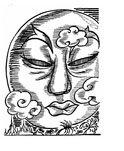
Can Recent Scientific Developments Explain Supernatural Phenomena?
OUR LADY OF LOURDES & M-THEORY
Two authors, somewhat similar in literary stature in Europe and the United States, wrote about the remarkable story of a mid-19th-century provincial French girl named Bernadette Soubirous (1844-1879). The Czech-born Franz Werfel (1890-1945) recounted the true tale in novel form, while the French novelist Michel de Saint-Pierre (1916-1987) wrote it as an investigative journalist. Werfel’s lyrical novel, The Song of Bernadette (translated from German by Ludwig Lewisohn and published in the U.S. in 1942), became a national bestseller, spending 13 weeks atop The New York Times’ prestigious list. Two years later, it was made into a motion picture of the same name, attaining tremendous popularity and winning four of the eight Academy Awards for which it was nominated, including Best Picture. It also won the Golden Globe award for Best Picture.
A decade later, de Saint-Pierre, a prolific Catholic novelist, wrote a thoroughly researched biography of Mademoiselle Soubirous. Titled Bernadette and Lourdes, it was first published in Paris in 1952. The splendid English translation by Edward Fitzgerald, glowing with luminous and faith-affirming prose, was published in 1954 and was followed by a paperback edition a year later. Regrettably, both the hardcover and paperback editions have been out of print for many years.
De Saint-Pierre’s far more accurate account never attained the popular — that is, commercial — success that Werfel’s novel did, although it was as deserving, perhaps more so. Whereas The Song of Bernadette revealed the novelist’s freedom to liberate his expansive and rich imagination to create scenes and dialogue (albeit plausible) among family members, friends, civil authorities, and important clerics of the time, de Saint-Pierre cited only the original, authentic transcripts that those same authorities had faithfully recorded, as well as — most importantly — the writings of Bernadette herself and the many depositions she was forced to give.
An example illustrating Werfel’s literary license and historical inaccuracy involves the Bouhouhorts family, whom he places in the house next door to the Soubirouses, with the wives as dear friends. The Bouhouhorts have but one child, a sickly, deformed two-year-old boy who is subject to convulsions. Bernadette’s mother, Louise, who has “a reputation for uncommon medical ability,” is the only one who can calm the convulsed child. Doctors agree that he is too weak to live. As a matter of fact, this family was completely unknown to the Soubirouses. De Saint-Pierre writes, “In Lourdes there lived a day laborer named Jean Bouhohorts” — note the different spelling — “and his wife, Croisine, together with their two-year-old child, a puny, ill-formed little creature already suffering from a decline…practically at the point of death.”
You May Also Enjoy
If Christ is so precious, perfect, loving, and wonderful, then what can be said of Mary of whom He is the fruit?
Hollywood knows there's a lucrative market for Christian movies -- as demonstrated by The Passion of the Christ, the modern-day gold standard for biblical screen portrayals -- and studios have big plans to cash in.
The mental image most people have of Our Blessed Mother has probably been generated and…

